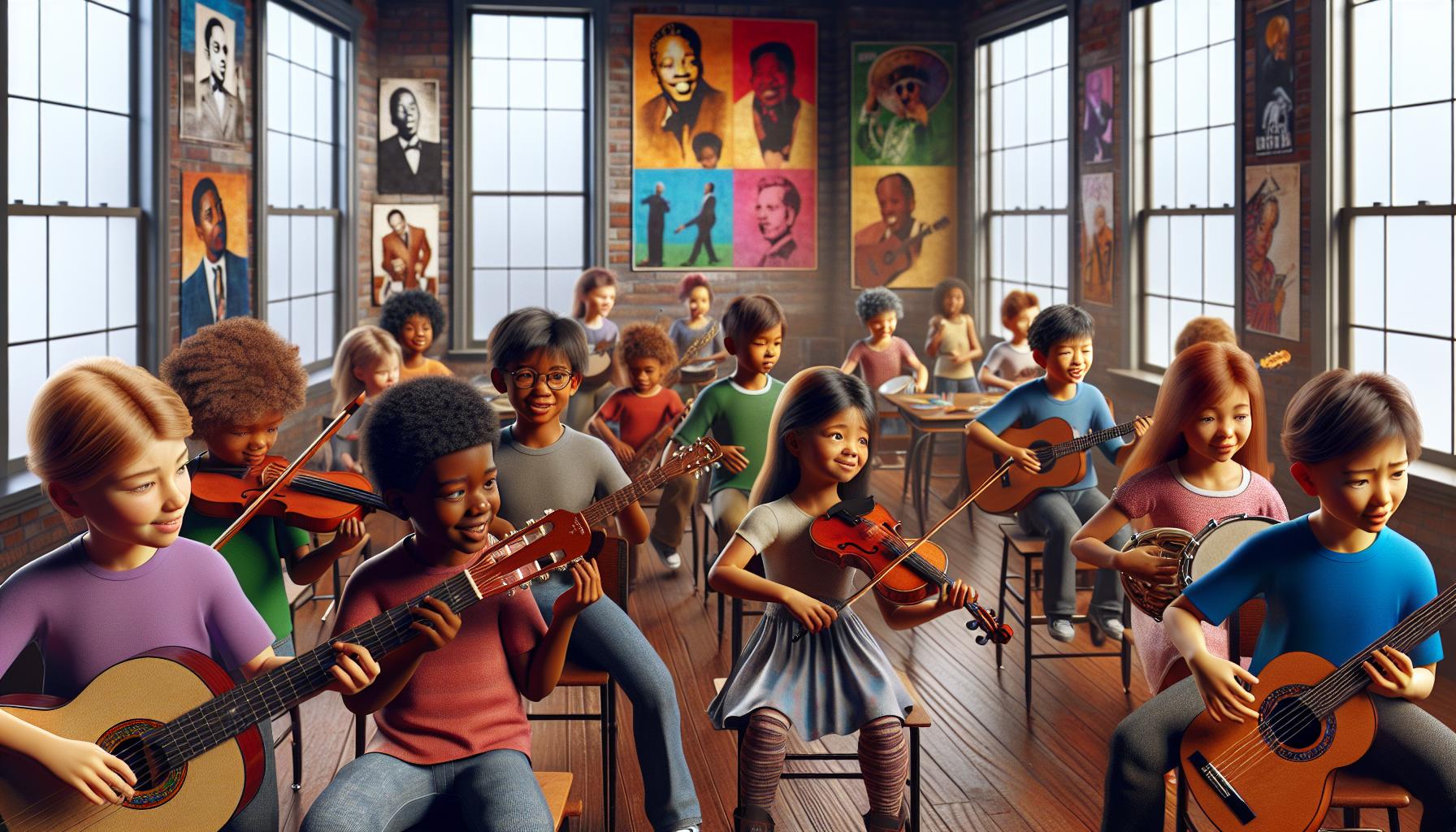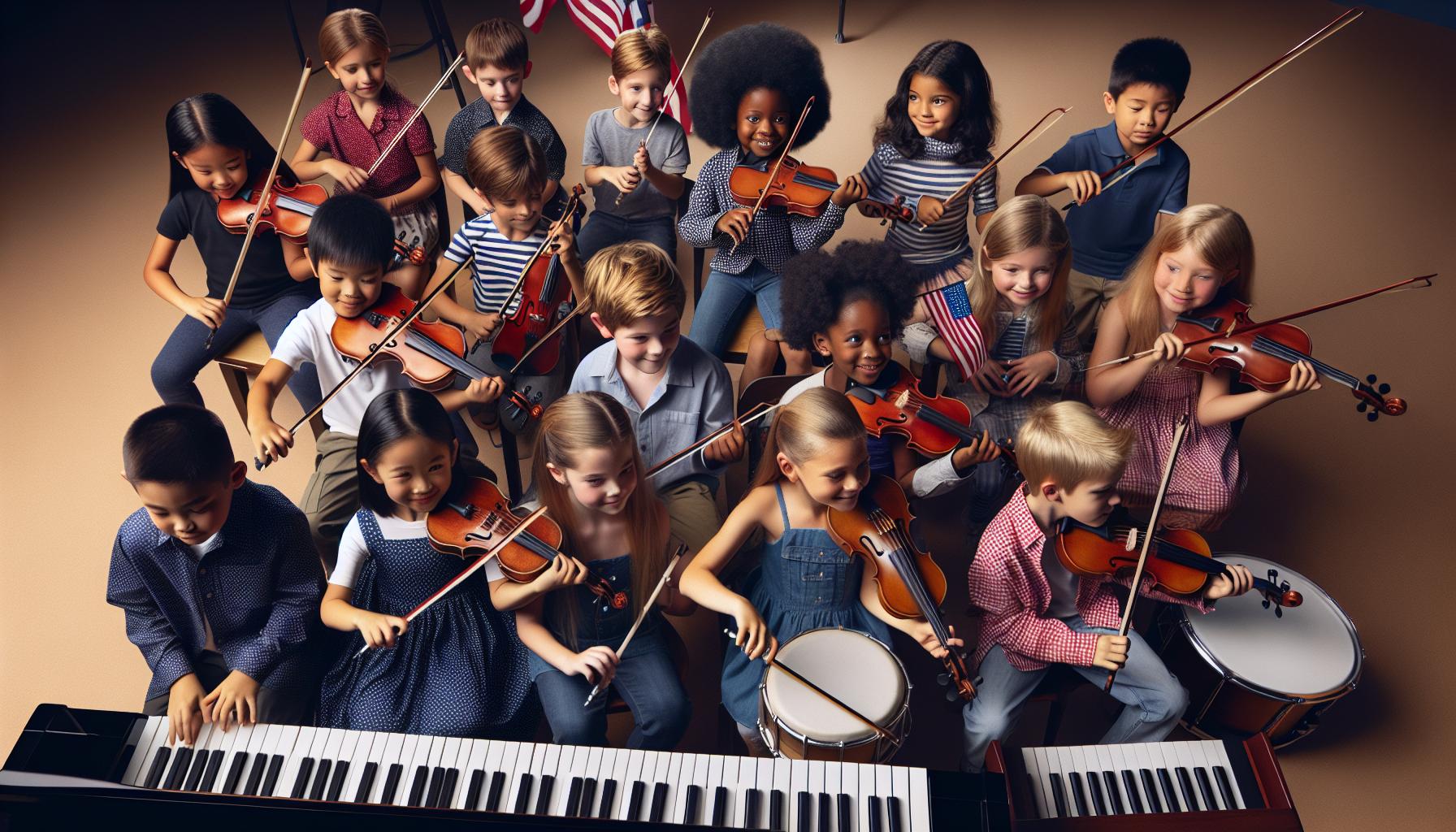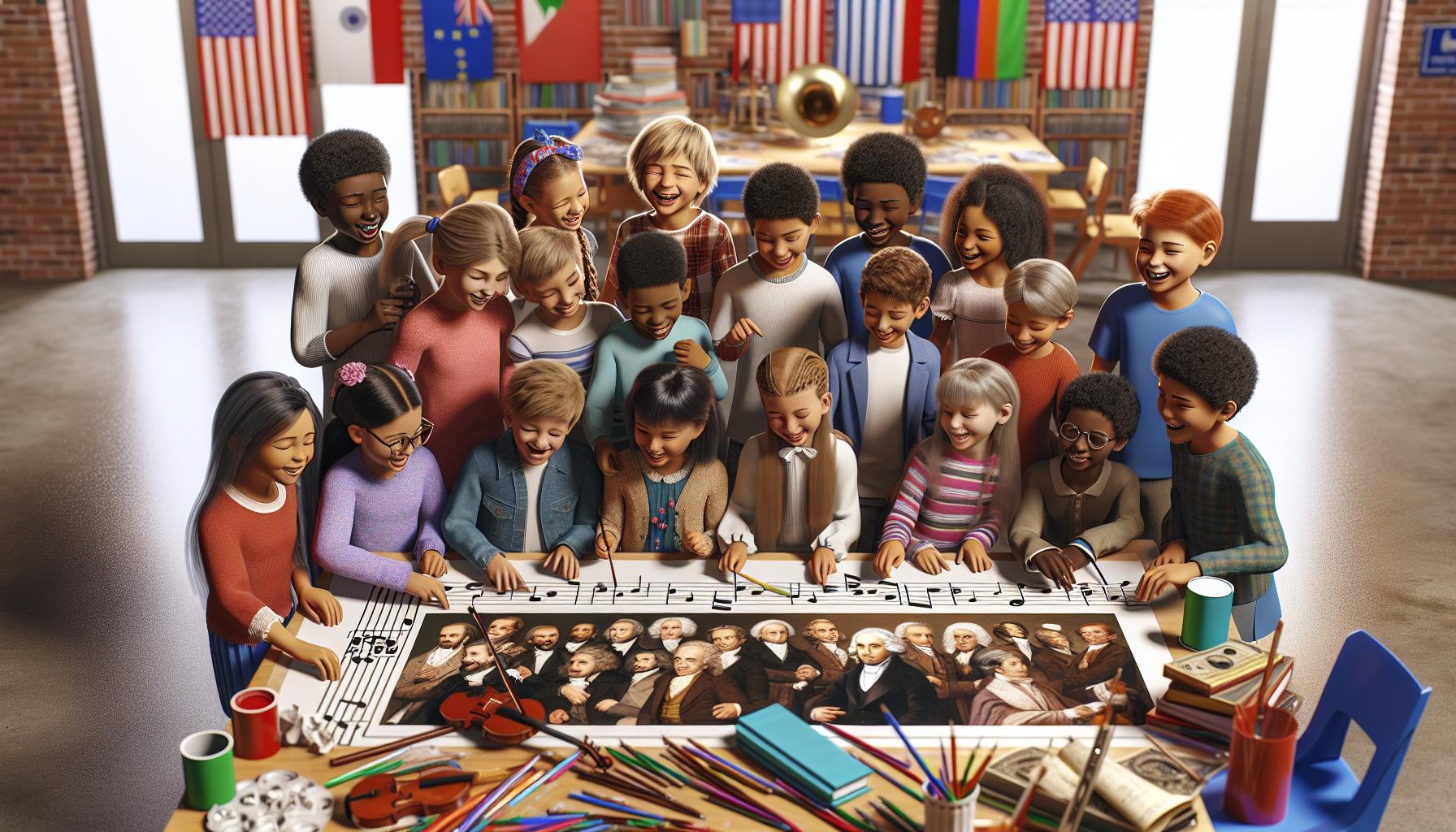Music has been a vital part of human culture for centuries, shaping societies and expressing emotions. For kids, understanding music history opens up a world of creativity and inspiration. From ancient rhythms to modern pop, each era has its unique sounds and stories that capture the imagination.
Exploring music history helps children appreciate the diverse influences that have shaped their favorite tunes. It’s not just about the songs they hear today; it’s about the legends, the movements, and the innovations that paved the way for contemporary artists. By diving into the past, kids can discover the magic of music and its ability to connect people across generations.
Key Takeaways
- Understanding Music’s Evolution: Music history provides children insights into how different eras, from ancient to modern, influenced contemporary sounds and genres.
- Cultural Connection: Kids learn about the cultural significance of music across various societies, enhancing their appreciation for global diversity.
- Developmental Benefits of Music Education: Engaging with music fosters cognitive skills, emotional expression, social interactions, and discipline in children.
- Key Historical Periods: Children explore major music periods, such as Classical, Baroque, and Romantic, identifying key composers and their contributions.
- Interactive Learning Activities: Fun, hands-on activities like music timelines and genre posters make learning about music history engaging and memorable for kids.
- Critical Thinking and Creativity: Analyzing music history encourages kids to think critically and inspires them to explore their own musical talents.
Music History For Kids
Music history for kids provides a fascinating journey through sound and culture. It spans from ancient rhythms to modern melodies, helping children discover the significance of music across time periods.
Ancient Music
- Early Instruments: Kids learn about ancient instruments like flutes and drums that civilizations used for rituals and celebrations.
- Cultural Significance: Music served as a form of storytelling, keeping traditions alive in communities around the world.
- Vocal Traditions: Singing was integral in every culture, often linked to religion and folklore.
Classical Music
- Notable Composers: Figures like Mozart and Beethoven introduced children to symphonies and operas, showcasing creativity and emotion in music.
- Music Notation: Kids explore how music became written down, allowing composers to share their works widely.
- Instruments in Orchestras: They discover various orchestral instruments, such as violins and trumpets, and learn about their roles in music.
Jazz and Blues
- Origins of Jazz: Emerging in the early 20th century, jazz reflects cultural fusion, originating from African American traditions.
- Influence of Blues: Children understand how blues music expresses deep feelings and inspired numerous genres.
- Improvisation: Kids appreciate the art of improvisation, a key element in jazz performances.
Rock and Pop
- Rock Evolution: Rock music arose in the 1950s, blending different influences and sparking youth culture.
- Iconic Bands and Artists: Bands like The Beatles and solo artists like Michael Jackson impact music and fashion, shaping global pop culture.
- Music Festivals: Kids explore the role of festivals in celebrating music and uniting people around shared interests.
- Digital Era: The rise of technology enables instant access to music through streaming services, affecting how kids consume music.
- Diverse Genres: Exposure to various genres like hip-hop, EDM, and country expands kids’ musical tastes.
- Cultural Blending: Modern artists often blend styles, demonstrating music’s continuous evolution and influence.
Music history for kids unveils how diverse influences shape contemporary sounds and connects them to historical cultural movements. Children gain a broader understanding of the significance of music in human expression and creativity.
The Importance Of Music Education

Music education plays a crucial role in child development, fostering skills that extend beyond musical abilities. Engaging with music enhances cognitive functions and stimulates creative expression.
Benefits Of Learning Music
- Cognitive Development: Learning music improves memory, attention, and problem-solving skills. Research indicates that students involved in music show enhanced brain function and academic performance.
- Emotional Expression: Music provides a medium for kids to express feelings and thoughts. This emotional outlet can lead to better mental health and increased self-esteem.
- Social Skills: Participating in music activities encourages teamwork and collaboration. Children learn to communicate and work together, fostering friendships and social interaction.
- Discipline and Patience: Mastering an instrument requires practice and perseverance. These experiences cultivate discipline and teach children the value of hard work.
- Cultural Awareness: Exposure to various music styles promotes appreciation for different cultures. Learning about global music traditions broadens children’s perspectives and encourages tolerance.
- Contextual Learning: Studying music history provides context for contemporary sounds. Kids gain awareness of how past innovations influence modern music genres and artists.
- Critical Thinking: Analyzing historical music trends fosters critical thinking skills. Children assess the impact of social movements and technological advancements on music evolution.
- Creativity and Inspiration: Exposure to diverse musical styles stimulates creativity. Understanding the historical context of music can inspire kids to explore their own musical talents and styles.
- Connections to Other Subjects: Music history integrates seamlessly with subjects like history, culture, and literature. This interdisciplinary approach enriches overall educational experiences.
- Appreciation for Diversity: Learning about various music movements encourages respect for diversity. Kids understand how different cultural expressions shape the global music landscape.
Key Periods In Music History

Music history spans several key periods, each marked by unique styles, influences, and innovations. Understanding these periods helps kids appreciate the evolution of music and its impact on culture.
The Classical Era
The Classical Era, from approximately 1750 to 1820, focused on clarity and balance in music structure. Composers like Haydn, Mozart, and Beethoven emerged during this period, each contributing significantly to symphonies, sonatas, and operas. The use of formal structures, such as sonata form, became prominent. The era saw the rise of orchestras, leading to the development of varied instrumentation and musical expression.
The Baroque Period
The Baroque Period, spanning from 1600 to 1750, emphasized grandeur and emotional depth. Key composers include Johann Sebastian Bach, George Frideric Handel, and Antonio Vivaldi. This period introduced complex musical forms like the concerto, opera, and oratorio. Ornamentation played a vital role in performances. The use of the harpsichord and developments in string instruments also defined this era, influencing future generations of musicians.
The Romantic Period
The Romantic Period, from around 1820 to 1910, celebrated individual expression and evocative themes. Composers such as Chopin, Tchaikovsky, and Wagner pushed boundaries with their innovative compositions. This era featured rich harmonies, expanded orchestras, and emotional storytelling through music. The emphasis on nationalism led to the incorporation of folk elements, while expressiveness and dramatic contrasts defined the musical landscape.
Modern Music Developments
Modern music developments began in the late 20th century and continue today. Genres such as jazz, rock, hip-hop, and electronic music emerged, reflecting cultural shifts and technological advancements. Artists like Louis Armstrong, The Beatles, and Beyoncé shaped contemporary sounds and styles. The digital era revolutionized music accessibility through platforms like Spotify and YouTube, encouraging a blend of genres and the global exchange of musical ideas.
Fun Activities To Teach Music History

Engaging children in music history through activities makes the learning process enjoyable and memorable. Various games and creative projects can enhance their understanding of musical evolution.
Interactive Games
- Music Timeline Challenge: Create a timeline on a large paper. Kids place images of composers, instruments, and significant events in the correct order. This activity reinforces chronological understanding.
- Identify the Tune: Play short clips of different music genres and ask kids to identify them. They can discuss the historical context of each genre, enhancing recognition and appreciation of diverse styles.
- Musical Bingo: Design bingo cards with different musical terms, instruments, or historical figures. As the teacher calls out clues, kids mark their cards. This game reinforces vocabulary related to music history.
- Composer Match: Prepare cards with composers and their famous works. Kids match composers to their compositions. This helps them learn about influential figures and their contributions to music.
- Instrument Crafting: Have kids create simple musical instruments from everyday materials. They can research the history of these instruments and present their creations, connecting practical activity with historical knowledge.
- Music Genre Posters: Assign different music genres to small groups of kids. They create posters featuring key characteristics, influential figures, and historical significance. This fosters teamwork and deepens genre-specific understanding.
- Historical Music Report: Encourage kids to choose a specific period in music history and write a short report. They can include visuals and perform a piece from that era, promoting research skills and performance abilities.
- Storytelling Through Music: Kids create a short story based on a piece of music from history. They can narrate the story while the music plays, linking narrative skills with musical understanding.
Exploring music history opens a world of creativity and understanding for kids. It allows them to connect deeply with the sounds they love while appreciating the rich tapestry of influences that shaped these melodies. Through engaging activities and interactive learning, children can discover the stories behind various genres and artists. This journey not only enhances their musical knowledge but also fosters essential skills like critical thinking and cultural awareness. By embracing music’s past, kids can cultivate a lifelong passion for the art form and its ability to unite people across generations.